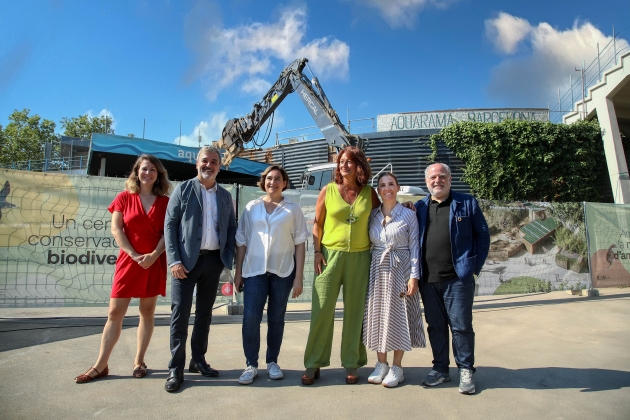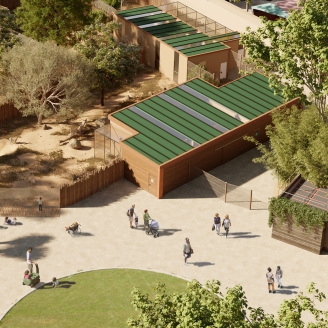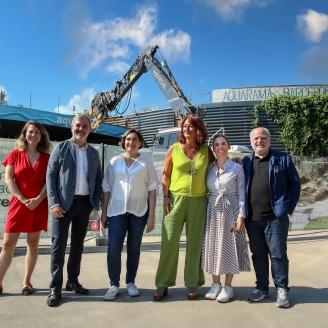


The work of dismantling the installation will last for four months, while the well-being of the animals in Barcelona Zoo will be ensured at all times
The new animal reserve, scheduled to open in 2024, will house species that will be temporarily affected during the Zoo’s transformation into a centre for the preservation of biodiversity
Barcelona Zoo takes another step towards its new model, based on the preservation of biodiversity and dissemination. This week, work started on demolishing the old Aquarama, an installation inaugurated in 1968 which has been closed since 2015.
Dismantling the old Aquarama will take four months and the work has been allocated a budget of nearly €365,000. The work will at all times strive to cause the minimum possible acoustic and environmental impact, thereby ensuring the well-being of the Zoo's animals. This is possible through the use of shears, which will break off pieces of concrete, instead of using the classic pneumatic demolition machinery, and avoiding noise and vibrations.
An animal reserve to make the new Barcelona Zoo model possible
The goals of the New Model for Barcelona Zoo include the transformation of most of its facilities, in order to create a centre for the preservation of biodiversity, which will actively contribute to the conservation, scientific research and dissemination of wild fauna and their natural habitats. These changes will be carried out while safeguarding the well-being and safety of the animals housed in Barcelona Zoo. For this reason, the free space left by the old Aquarama will be used to create an animal reserve.
Construction work on this new facility will begin in the autumn of 2023 and is scheduled for completion in the summer of 2024. It will be used to house the Zoo species that will be temporarily affected by the improvement work planned in coming years. Its construction has a budget of €800,000.
A space adapted to the needs of each species, safeguarding the well-being of the animals
The future animal reserve will focus on animal health and well-being, ensuring that their needs are met at all times. It will have a surface area of 3,500 m2, including five exterior courtyards, viewable for visitors, and three sleeping areas. All of these spaces will be properly equipped and adaptable to the needs of each species, as well as those of their keepers. In order to reproduce the various habitats, there will be rocks, tree trunks, and shady areas, as well as air-conditioned spaces and technical rooms. The facility’s environment will be adapted with vegetation.
Over 50 years of history
Aquarama and the Dolphin Pavilion were inaugurated in 1968, on the day of La Mercè, when Antoni Jonch i Cuspinera was the head of Barcelona Zoo. Inspired by the Seaquarium in Miami, it was one of the first facilities of that type in Europe, and its construction posed a significant challenge. Not only because of its size, but due to the complexity of having to store a vast amount of salt water and maintain it in good condition, while also having to periodically replace it.
From its inauguration until 2011, a total of 31 dolphins were housed in Aquarama and the Dolphin Pavilion. Some of them coexisted with Ulisses, the killer whale, which arrived in 1983 and stayed until 1994, when it was transferred to Sea World in San Diego, in the USA.
Aquarama was open to the public until 2015, the year when shows featuring those cetaceans were stopped. Barcelona Zoo continued to care for its last dolphins until July 2020.



